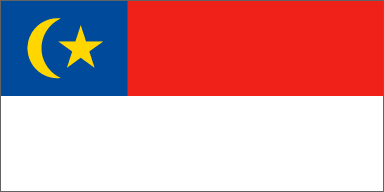Malacca -State And Attractions | Melaka, dubbed "The Historic State" is the third smallest Malaysian state after Perlis and Penang. It is located in the southern region of the Malay Peninsula, next to the Straits of Malacca.
It borders Negeri Sembilan to the north and Johor to the south. The capital is Malacca City, which is 148 km south east of Malaysia's capital city Kuala Lumpur, 235 km north west to Johor's largest city Johor Bahru, and 95 km north west to Johor's second largest city Batu Pahat. This historical city centre has been listed as a UNESCO World Heritage Site since 7 July 2008.
Although it was the location of one of the earliest Malay sultanates, the monarchy was abolished when the Portuguese conquered it in 1511. The head of state is the Yang di-Pertua Negeri or Governor, rather than a Sultan.
Melaka Popular Historical Attractions
Fort A Famosa: Constructed by the Portuguese in 1511, it suffered severe structural damage during the Dutch invasion. The plan by the British to destroy it was aborted as a result of the intervention of Sir Stamford Raffles in 1808.
St. John's Fort: Reconstructed by the Dutch in the third quarter of the 18th century, the cannons in this fort point inland because at that time, the threat to Malacca was mainly from inland rather than the sea.
St. Peter's Church: Constructed in 1710 under the Dutch administration, the church is the oldest Catholic church in Malaysia. Its facade and decorative embellishment is a mix of both eastern and western architecture. Its bell was delivered from Goa in 1608.
St. Paul's Church: Constructed by the Portuguese captain, Duarte Coelho, this church was named "Our Lady of The Hill", but was later turned into a burial ground by the Dutch for their noble dead, and renamed "St. Paul's Church". Currently the church is part of the Malaccan Museums Complex. The body of St. Francis Xavier was interred here temporarily before it was taken to Goa, India.
Christ Church: Constructed in 1753, the structure reflects original Dutch architecture. The building houses hand-crafted church benches, jointless ceiling skylights, a copper replica of the Bible, a headstone written in the Armenian language, and a replica of "The Last Supper".
Francis Xavier Church: This Gothic church was built by a French priest, Rev. Fabre, in 1849, to commemorate St. Francis Xavier who is also known as the "Apostle of the East". St. Francis Xavier is credited for his Catholic missionary work in Southeast Asia during the 16th century.
Stadthuys: Constructed in 1650 as the residence of the Dutch Governor and his deputy, the structure reflects Dutch architecture. It is today the "Museum of History and Ethnography". The museum exhibits traditional wedding clothes and artifacts of Melaka, dating back to its days of glory.
Cheng Hoon Teng Temple: Located along Jalan Tokong (formerly Temple Street) in the core zone of the Malacca Unesco World Heritage Site. It is the oldest functioning temple in Malaysia and grandest temple in Malacca.
Jonker Street (Jalan Hang Jebat): This street is known for its antique goods.
Portuguese Square: Located within the Portuguese Settlement, the square is the culmination of Portuguese culture in its full splendour and colours.
Sri Poyyatha Vinayagar Moorthi Temple: This is the oldest Hindu Temple in Malaysia.It was built in 1781 on land given by the Dutch to the Chitty community.
Tranquerah Mosque: The oldest mosque in Malacca.
Kampung Kling Mosque: Kampung Kling Mosque is one of the oldest mosques in Malaysia. It was built around 1784 with the influence of Sumatran architecture. Firstly, there’s no Byzantium dome around. It was replaced by a tiered pyramidal roof. Secondly, just look at the minaret which is structured like a pagoda. There are even Chinese characters carved on the side roof of the mosque.
source
http://en.wikipedia.org/wiki/Malacca

















.jpg)
.jpg)








